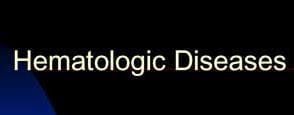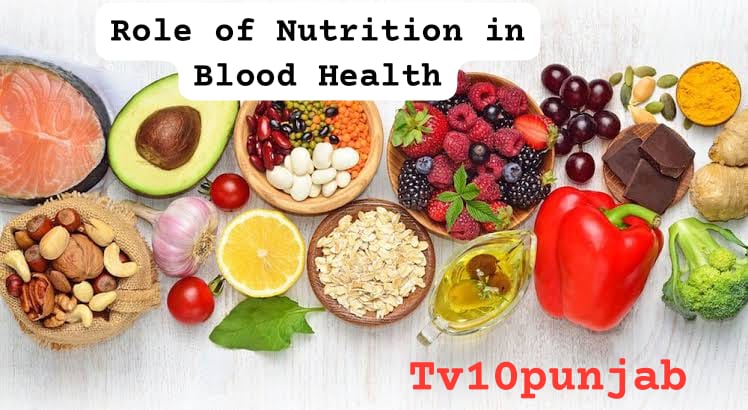Tv10punjab | Health Desk
Blood is life. It runs through our veins and keeps every part of our body working smoothly. But what happens when there is a problem in the blood itself? That’s where hematology diseases come in.
Hematology is the study of blood and its components—like red blood cells (RBCs), white blood cells (WBCs), platelets, hemoglobin, bone marrow, and lymph nodes. Hematology diseases are disorders that affect these components.
🧬 What is a Hematology Disease?

A hematology disease is any condition that affects the blood or blood-forming tissues. This includes the:
Red blood cells (carry oxygen)
White blood cells (fight infection)
Platelets (help in blood clotting)
Plasma (fluid part of blood)
Bone marrow (produces blood cells)
These diseases can be inherited (genetic) or acquired due to lifestyle, infections, or other medical conditions.
🧾 Common Types of Hematology Diseases
Let’s look at some of the most well-known hematology diseases in detail:
- Anemia
Anemia occurs when your body does not have enough healthy red blood cells or hemoglobin to carry oxygen. It is one of the most common blood disorders in the world.
Causes:
Iron deficiency
Vitamin B12 or folate deficiency
Chronic diseases
Blood loss due to injury or menstruation
Genetic conditions like Thalassemia
Symptoms:
Fatigue
Pale skin
Shortness of breath
Dizziness
Treatment:
Iron or vitamin supplements
Healthy diet
Blood transfusion (in severe cases)
- Leukemia
Leukemia is a type of blood cancer that affects the white blood cells. These cells grow uncontrollably and do not function properly.
Types:
Acute Lymphoblastic Leukemia (ALL)
Chronic Lymphocytic Leukemia (CLL)
Acute Myeloid Leukemia (AML)
Chronic Myeloid Leukemia (CML)
Symptoms:
Fever
Frequent infections
Easy bruising or bleeding
Bone pain
Weight loss
Treatment:
Chemotherapy
Radiation therapy
Bone marrow transplant
- Thalassemia
Thalassemia is a genetic blood disorder where the body makes an abnormal form of hemoglobin. This causes red blood cells to break down faster than normal.
Symptoms:
Fatigue
Slow growth in children
Pale or yellow skin
Bone deformities
Treatment:
Regular blood transfusions
Iron chelation therapy
Bone marrow transplant (in severe cases)
- Hemophilia
Hemophilia is a rare genetic disorder where the blood doesn’t clot properly. Even small injuries can lead to heavy bleeding.
Symptoms:
Easy bruising
Nosebleeds
Prolonged bleeding after cuts or surgeries
Internal bleeding in joints
Treatment:
Clotting factor replacement therapy
Avoiding injuries
Regular medical monitoring
- Sickle Cell Anemia
Sickle cell anemia is another inherited disease where red blood cells become “sickle” shaped instead of round. These cells block blood flow and break easily.
Symptoms:
Severe pain (called sickle cell crisis)
Anemia
Swelling in hands and feet
Frequent infections
Delayed growth
Treatment:
Pain management
Blood transfusions
Hydroxyurea medicine
Bone marrow transplant
- Thrombocytopenia
Thrombocytopenia means a low platelet count. Platelets help in blood clotting. A low count can lead to excessive bleeding or bruising.
Causes:
Autoimmune diseases
Medications
Viral infections like dengue or hepatitis
Bone marrow diseases
Symptoms:
Easy bruising
Prolonged bleeding
Small red spots (petechiae) on the skin
Treatment:
Stopping certain medications
Platelet transfusion
Treating the underlying disease
- Multiple Myeloma
This is a type of blood cancer that affects plasma cells (a type of white blood cell). These cancerous cells build up in the bone marrow.
Symptoms:
Bone pain
Frequent infections
Anemia
Kidney problems
Treatment:
Chemotherapy
Radiation therapy
Stem cell transplant
🩺 Symptoms of Hematology Diseases
Though symptoms vary with the type of disease, here are some common signs that something might be wrong with the blood:
Tiredness or weakness
Pale or yellow skin
Frequent infections
Easy bleeding or bruising
Bone pain
Swollen lymph nodes
Nosebleeds
Shortness of breath
If you notice these symptoms regularly, consult a doctor for testing.
🔬 Diagnostic Tests
Doctors use several blood and bone marrow tests to identify hematology diseases:

🥗 Role of Nutrition in Blood Health
A healthy diet plays a big role in preventing and managing blood disorders.

Include:
Iron-rich foods (green leafy vegetables, dates, jaggery)
Vitamin B12 (milk, eggs, fortified cereals)
Folic acid (lentils, citrus fruits)
Plenty of water
Lean proteins (fish, chicken, tofu)
Foods To Avoid

Excess alcohol
Junk food
Smoking (reduces oxygen in blood)
🛡️ Can Hematology Diseases Be Prevented?
Some diseases like anemia and thrombocytopenia can be prevented with good nutrition, hygiene, and regular health checkups. However, genetic disorders like sickle cell anemia and thalassemia cannot be prevented but can be managed well with early diagnosis and lifelong care.
Genetic counseling before marriage or pregnancy is also recommended in families with a history of blood disorders.
🧠 Final Words
Hematology diseases may sound scary, but with modern science, most of them can be managed effectively. Early diagnosis, the right treatment, and a healthy lifestyle make a big difference. If you or someone you know shows symptoms of a blood disorder, do not ignore them. Get tested, talk to a hematologist, and follow a treatment plan.
Blood is the river of life—let’s keep it clean, strong, and healthy.